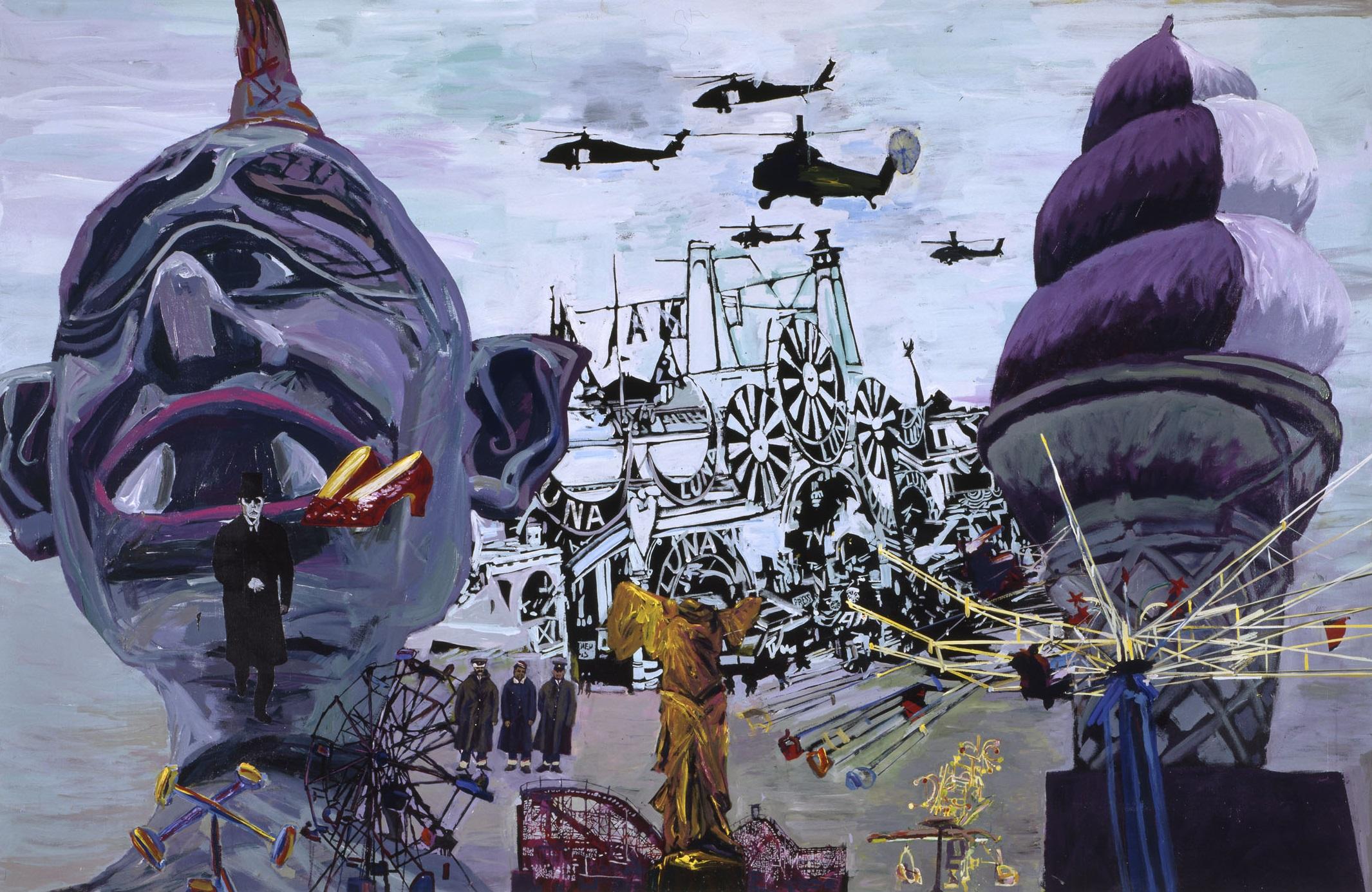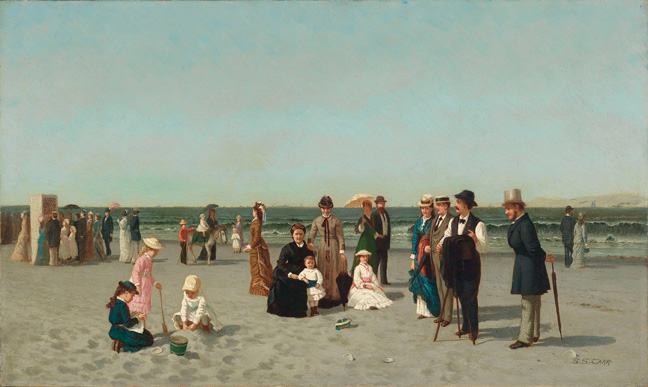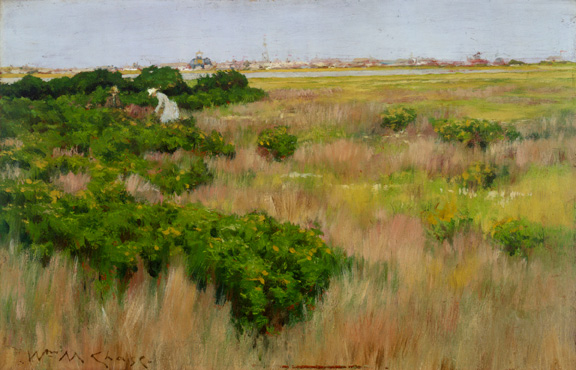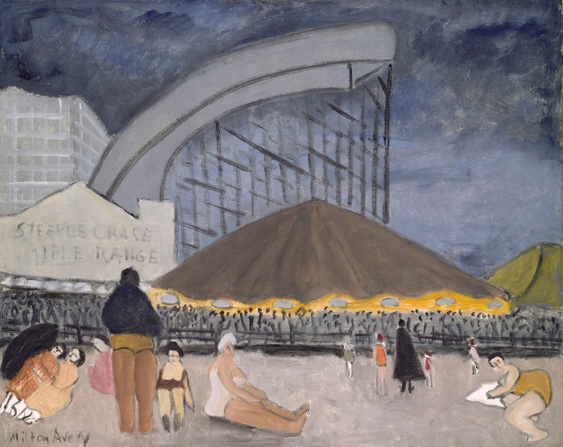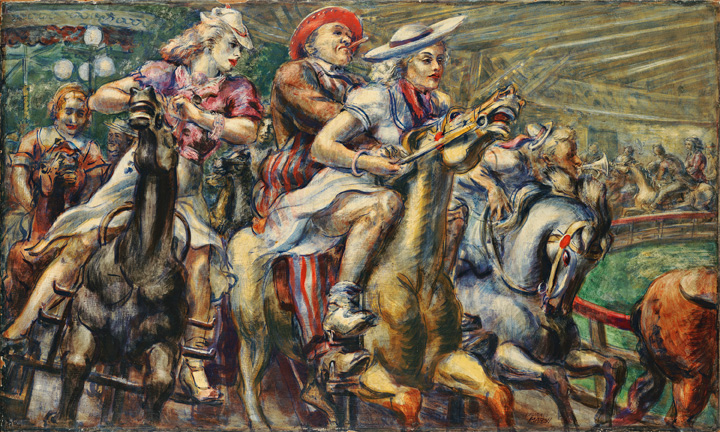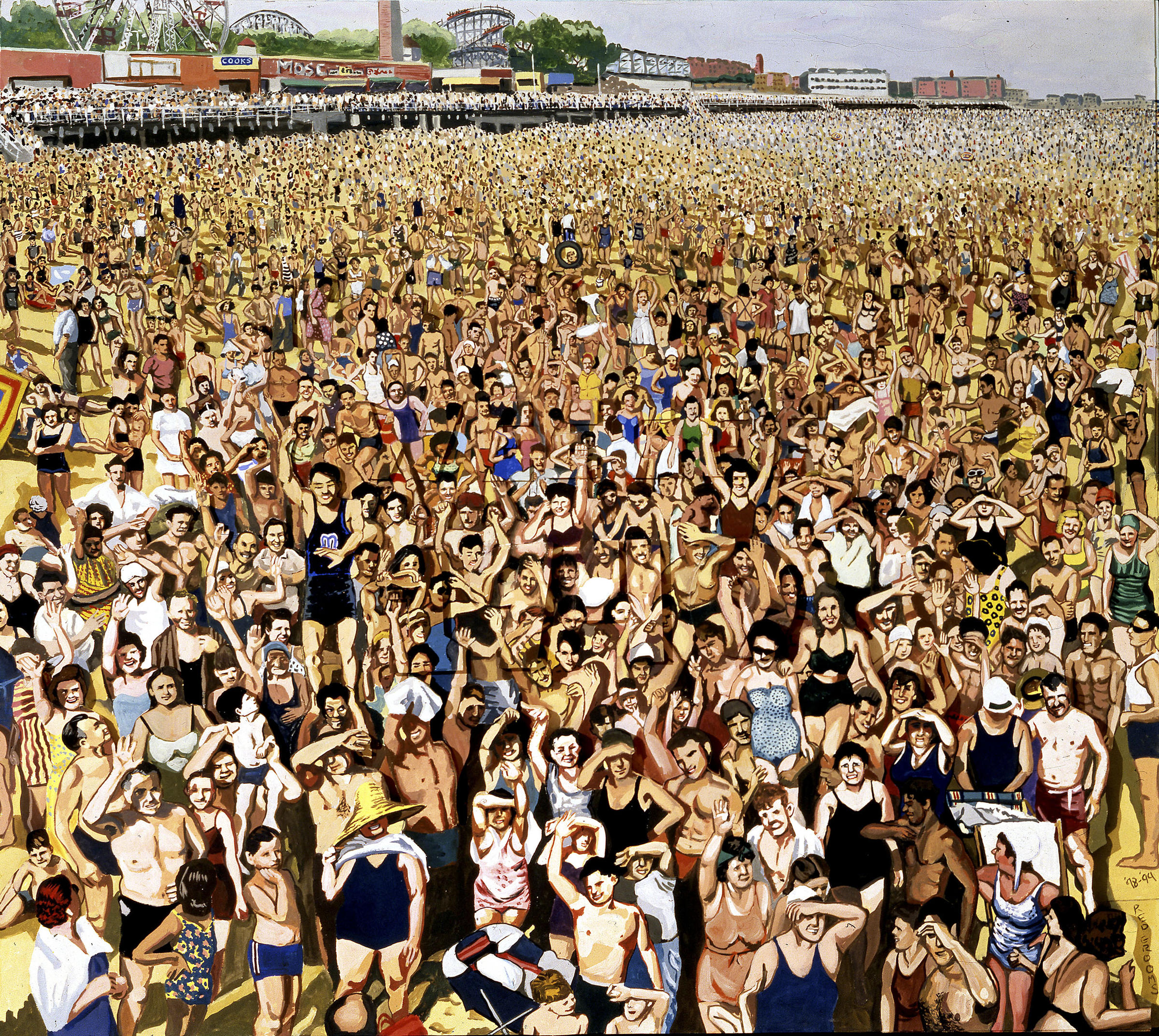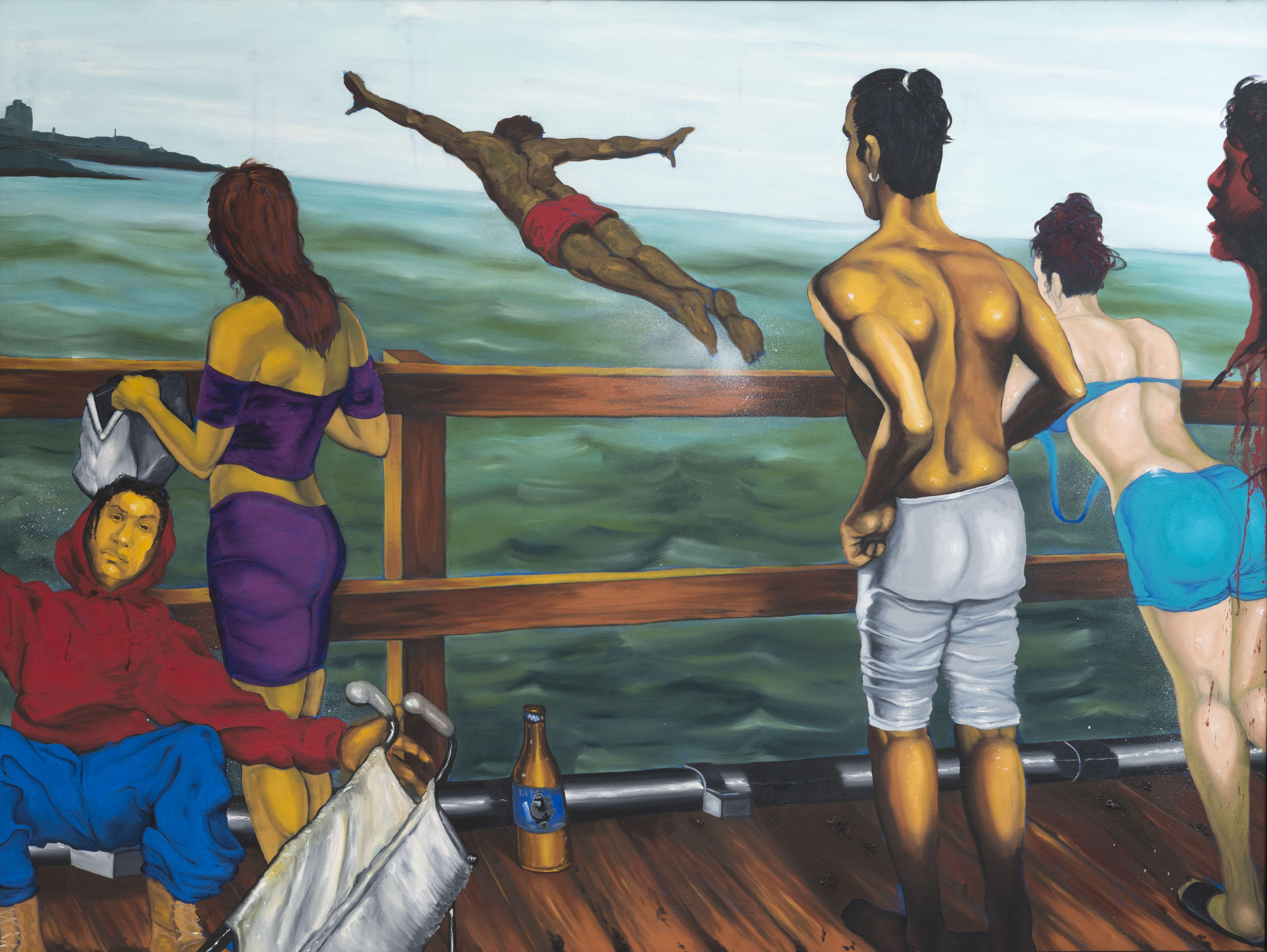Coney Island: Visions of an American Dreamland, 1861-2008
is on view at the San Diego Museum o from July 11 through October 11, 2015.
Composed of more than 150 objects including celebrated icons of American art
and rarely seen works from public and private collections, this exhibition
explores the lure Coney Island has exerted on the American imagination for more
than a century.
The display at The San
Diego Museum of Art follows a run at the Wadsworth Atheneum in Hartford, Ct.
After this, Coney Island: Visions of an American Dreamland will
travel to The Brooklyn Museum, and McNay Art Museum in San Antonio, Tx.
Coney Island’s
fascinating history as aworld-famous resort and a national cultural symbol was
shaped by the times—and it helped to shape the times. Artists’ visions of Coney
Island became a vehicle to imagine the future, to convey changing ideas about
leisure, and to explore the mixing of people from different racial, ethnic and
class backgrounds, transcending social boundaries.
An extraordinary array
of artists viewed Coney Island as a microcosm of the American experience, from
its beginnings as a watering hole for the wealthy, through its transformation
into an entertainment mecca for the masses o the closing of Astroland Amusement
Park following decades of urban decline. From early depictions of “the people’s
beach” by Impressionists William Merritt Chase and John Henry Twachtman, to
modern and contemporary images by Diane Arbus, Walker Evans, Robert Frank, Red
Grooms, Yasuo Kuniyoshi, Reginald Marsh, Joseph Stella, and George Tooker,
“Coney Island: Visions of an American Dreamland” will investigate America’s
playground as a place and an idea.
The exhibition will
bring to life the excitement of Coney Island, which occupies not only a strip
of sand in Brooklyn but also a singular place in the American imagination. The
modern American mass-culture industry was born at Coney Island, and the
constant novelty of the resort made it a seductively liberating subject for
artists. What these artists saw from 1861 to 2008 at Coney Island and how they
chose to portray it varied widely in style and mood over time, mirroring the
aspirations and disappointments of the era and of the country. Taken together,
these tableaux of wonder and menace, hope and despair, dreams and nightmares,
become metaphors for the collective soul of a nation.
Coney Island has been
viewed as a microcosm of the American experience by an extraordinary array of
artists including William Merritt Chase, John Henry Twachtman, Reginald Marsh,
Walker Evans, Diane Arbus, poet Lawrence Ferlinghetti, Frank Stella, and Red
Grooms. Showcasing an eclectic mix of drawings, prints, paintings, photographs,
film clips, and assorted artifacts such as carousel animals, this exhibition
brings to life the excitement of Coney Island, which occupies not only a strip
of sand in Brooklyn but a singular place in the American imagination.
From Reginald Marsh’s
glamorous and gaudy Pip and Flip and Wooden Horses (below) to
Arnold Mesches, Anomie 2001: Coney
from the series Anomie, 1997
Acrylic on canvas
80 x 96 inches
Whitney Museum of American Art,
New York. Gift of Jill Ciment,
2006.336
Arnold
Mesches’ gothic-inspired canvas from the Museum’s Permanent Collection, Coney
Island: Visions of an American Dreamland is the first exhibition to
explore Coney Island as a place and an idea. Looking at the evolution from
glamorous beach playground to entertainment mecca, and the decay and neglect
that followed, Coney Island: Visions of an American Dreamland illuminates
the contrasts between this once great place and the artifacts that
remain.
The exhibition’s section
titles are taken from contemporary quotations that communicate changing popular
perceptions—vividly conveyed by the artwork—about America’s Playground through
the generations: Down at Coney Isle,”1861–1894; “The World’s Greatest
Playground,” 1895–1929; “The Nickel Empire,” 1930–1939; “A Coney Island of the
Mind,” 1940–1961; and “Requiem for a Dream,” 1962–2008.
“We are thrilled to be offering our visitors
the chance to see an iconic American landmark from a new perspective,” says
Roxana Velásquez, Maruja Baldwin Executive Director of The San Diego Museum of
Art. “There are traces of Coney Island throughout San Diego in places such as
Belmont Park and in Balboa Park’s history as a fairground, so it’s momentous to
have the opportunity to see the artistic impact of a destination with such a
rich past.”
To accompany the
featured works, a fully illustrated scholarly catalogue has been
co-published by the Wadsworth
Atheneum Museum of Art and the Yale University Press. It includes
the first sustained visual analysis of great works about Coney Island by
exhibition curator Dr. Robin Jaffe Frank, and essays by other distinguished
cultural historians.
Developed by the
Wadsworth Atheneum, the exhibition has been organized in San Diego by Dr. Ariel
Plotek, Associate Curator of Modern Art.
Samuel
S. Carr,
Beach
Scene, c. 1879, oil on canvas,
Smith
College Museum of Art, Northampton,
Massachusetts,
Bequest of Annie Swan Coburn
(Mrs.
Lewis Larned Coburn)
William
Merritt Chase,
Landscape,
near Coney Island c. 1886,
oil on panel, The Hyde Collection, Glens Falls, NY, Gift of Mary H. Beeman to the Pruyn Family
Collection, 1995.12.
Joseph
Stella,
Battle
of Lights, Coney Island, Mardi Gras, 1913
oil
on canvas, Yale University Art Gallery,
New
Haven, Connecticut,
Gift
of Collection
Société
Anonyme, 1941.689
Milton
Avery,
The
Steeplechase, Coney Island, 1929,
oil
on canvas,
The
Metropolitan Museum of Art, New York
Gift
of Sally M. Avery, 1984 (1984.527)
Image
© The Metropolitan Museum of Art. Image
source: Art
Resource,
New York; © 2013 Milton Avery Trust/Artists
Rights
Society (ARS), New York
Reginald
Marsh,
Wooden
Horses , 1936,
tempera on board,
Wadsworth
Atheneum Museum of Art,
Hartford,
Connecticut,
The
Dorothy Clark Archibald and Thomas L.
Archibald
Fund, The Krieble Family Fund for American
Art,
The American Paintings Purchase Fund, and The Ella
Gallup
Sumner and Mary Catlin Sumner Collection Fund,
2013.1.1
©
2013 Estate of Reginald Marsh / Art Students
League,
New York / Artists Rights Society (ARS), NewYork
Reginald
Marsh,
Pip
and Flip, 1932,
tempera on paper mounted
on canvas,
Terra
Foundation for American Art,
Chicago
Daniel
J. Terra Collection, 1999.96
Photo
Credit: Terra Foundation for American
Art, Chicago/Art
Resource,
New York; © 2013 Estate of Reginald
Marsh/Art
Students League, New York/Artists Rights
Society
(ARS), New York
Red
Grooms, Weegee
1940 , 1998 – 99,
acrylic on paper,
Private Collection
Image
Courtesy Marlborough Gallery, New York;
© 2013 Red Grooms/Artists Rights Society
(ARS), New York
DAZE
Coney Island Pier
1995
Oil on canvas
60 x 80 inches
Collection of the artist
